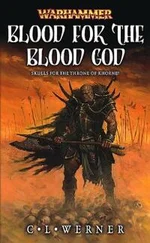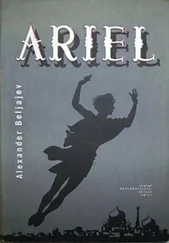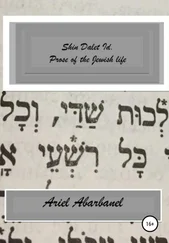Ariel Toaff - Blood Passover
Здесь есть возможность читать онлайн «Ariel Toaff - Blood Passover» весь текст электронной книги совершенно бесплатно (целиком полную версию без сокращений). В некоторых случаях можно слушать аудио, скачать через торрент в формате fb2 и присутствует краткое содержание. Жанр: Религиоведение, на английском языке. Описание произведения, (предисловие) а так же отзывы посетителей доступны на портале библиотеки ЛибКат.
- Название:Blood Passover
- Автор:
- Жанр:
- Год:неизвестен
- ISBN:нет данных
- Рейтинг книги:3 / 5. Голосов: 1
-
Избранное:Добавить в избранное
- Отзывы:
-
Ваша оценка:
- 60
- 1
- 2
- 3
- 4
- 5
Blood Passover: краткое содержание, описание и аннотация
Предлагаем к чтению аннотацию, описание, краткое содержание или предисловие (зависит от того, что написал сам автор книги «Blood Passover»). Если вы не нашли необходимую информацию о книге — напишите в комментариях, мы постараемся отыскать её.
Blood Passover — читать онлайн бесплатно полную книгу (весь текст) целиком
Ниже представлен текст книги, разбитый по страницам. Система сохранения места последней прочитанной страницы, позволяет с удобством читать онлайн бесплатно книгу «Blood Passover», без необходимости каждый раз заново искать на чём Вы остановились. Поставьте закладку, и сможете в любой момент перейти на страницу, на которой закончили чтение.
Интервал:
Закладка:
602
"Vidit cadaver dicti pueri extensum super almemore, qui est discus positus in medio sinagoge, super quo ponunt libros" [“They saw the body of the boy lying on the almemor, placed in the middle of the synagogue, which is where they place their books”] (cfr. ibidem, p. 324).
603
"Et die Sabbati [...] ipse Angelus ivit ad domum Samuelis et intravit dictas scolas et vidit quoddam cadaver pueri mortui positum super almemor, quod est verbum Hebraicum, quod est dicere in lingua latina ‘locus sermonis’; qui almemor est discus quidam super quo ponuntur quinque libri Moisi. Qui discus sive almemor era positus in medio Scole, super quo disco erat cadaver dicti pueri, quod cadaver iacebat resupinum" [“ And on the Sabbath […] this Angelo went to Samuele’s house and entered their school and saw the body of the dead boy placed on the almemor, which is the Hebrew word for what is called in Latin ‘the place where we give our sermons’, which almemor is the chest upon which they place books”] (cfr. ibidem, p. 286).
604
Vitale, Samuele da Nuremberg’s agent, stated "quod illud (i.e., Little Simon’s body) sic vidit in dicto die Sabbati, de mane, in sinagoga super almemore, et quod illud erat coopertum quodam palleo de sirico diversi coloris; et similiter illud vidit dicta die, de sero, tempore quo dicebantur offitia in eorum sinagoga" [“that they saw it (the body) that Sabbath, in the morning, in the synagogue, on the almemor, and that ti was covered with a cloth of various colors, and they also saw it that day, in the evening, when they have their religious services”] (cfr. ibidem, p. 220). Samuele da Nuremberg confirmed that "dictum corpus pueri erat coopertum una tovalea, qua tovalea solent uti super suo altari [...] et post coperto dicto corpore et illo stante in almemore, venerunt omnes alii Iudei in sinagogam et ibi dixerunt offitia sua" (cfr. ibidem, p. 248).
605
"Corpus illud fuit portatum [...] in quadam cameram contiguam Synagogae et illud corpus posuit in quadam capsam. Et dicit quod mane sequenti venerunt plures alii Judaei ad videndum dictum corpus et in qua die sequenti de sero idem corpus fuit sublatum de capsa et portatum in Synagogam praedictam [...] corpore stante extenso super Almemore" [“The body was taken […] into the chamber adjacent to the synagogue and placed on the chest. And he said that in the morning several other Jews came and saw the body and that on the following day the body was taken from the chest and taken into the synagogue [..] and placed on the almemor”] (cfr. [Benedetto Bonelli], Dissertazione apologetica sul martirio del beatoSimone da Trento nell'anno MCCCCLXXV dagli ebrei ucciso , Trento, Gianbattista Parone, 1747, p. 141).
606
The circumcision of the Jews on the occasion of the exodus from Egypt, when they are said to have complied with this precept for the first time, is mentioned in the Midrash: Shemot Rabbah 17,3-5; 19,5; Ruth Rabbah 6; Shir ha-shirim Rabbah 1,35; 5; Tanchumah 55, 4; Pesiktah de-Rav IV: Kazhanah 63,27.
607
"Interrogatus quod dicat quid importat aut significat illud vulnus quod factum fuit puero in maxilla dextra, respondit quod hoc significat quod Moyses per os suum pluries dixit Pharaoni quod debere dimittere populum suum Israheliticum; et quod vulnus quod habebat puer in tibia dextra, fit ad significationem quod Pharao et populus Egiptiacus, qui persequebantur ipsos ludeos, quod in eorum itineribus fuerunt infelices; et quod vulnus quod habebat puer in virga significat circumcisionem eorum et quod punctiones que fiunt per corpus pueri significant quod populus Egiptiacus in omni parte corporis sui fuit percussus" [“When asked the meaning of the injury to the boy’s right jaw, he answered that this meant that the laws of Moses told the Pharaoh orally several times to let the Israelites go; and that the injury to the boy’s right shinbone meant that the Pharaoh and the people of Egypt, who were persecuting the Jews, who were unhappy in their wanderings, and that the injury to his penis referred to their circumcision and that the puncture wounds to the boy’s body meant that the people of Egypt were inflicted with suffering in all parts of their body”] (cfr. Esposito and Quaglioni, Processi , cit., voI. I, p. 291).
608
Bonaventura (Seligman) di Mohar, Mosè da Würzburg’s young nephew, maintained that he had heard those present at the rite pronounce the words Tolle, Iesse mina , "que verba ipse Bonaventura nescit quid important" (cfr. ibidem, p. 157). Israel Wolfgang (and his statement in this regard was confirmed by Joav da Ansbach, Tobias the physician’s servant) had, on that same occasion, heard the same words Tolle, lesse mina from the mouth of Mosè "the Old Man" da Würzburg. At this, Bishop Hinderbach noted in the margin: "verba enim praedicta significant tantum "suspensus" Jesus hereticus'" ([“the aforesaid words mean as much as ‘the hanged one’, Jesus the heretic”], cfr. [Bonelli], Dissertazione apologetica , cit., pp. 149-151). For his part, Bonaventura (Seligman), Samuele da Nuremberg’s cook, recalled that he had heard the words memmholzdem talui , perhaps a distorted rendering of the Hebrew mamzer talui , "the hanged bastard" (cfr. Esposito and Quaglioni, Processi, cit., voI. l, p. 138).
609
Anna Esposito maintains in this regard that the phrases "reproducing the curses of the Jews against the Christians, sometimes rendered in transliterated Hebrew, more often in a sort of pseudo-Hebrew, and then translated into Latin, and often into Italian as well" were intended to "augment, through the introduction of words in an obscure foreign language, the sensation of mystery and fear which were already, by the very nature of things, afflicting the Hebraic world". The insertion of such phrases in fact "seems to have been effected precisely to confirm, first of all, in all readers of the trial records, the impression of an obscure Satanic rite smelling of witchcraft" (cfr. Esposito and Quaglioni, Processi, cit., voI. I, pp. 70-71). For a similar opinion, see D. Quaglioni, Propaganda antiebraica e polemiche di Curia , in M. Miglio, F. Niutta, C. Ranieri and D. Quaglioni, Un pontificato ed una città. Sisto IV (1471-1484 ), Atti del Convegno, Roma, 2-7 December 1984, Città del Vaticano, 1988, p. 256. W.P. Eckert ( Motivi superstiziosi nel processo agli ebrei di Trento , in I. Rogger and M. Bellabarba, Il principe vescovo Johannes Hinderbach, 1465-1486, fra tardo Medioevo e Umanesimo , Atti del Convegno held by the Biblioteca Comunale di Trento, 2-6 October 1989, Bologna, 1992, p. 393) states that "the Jews had to be made to look ridiculous because ridicule produces a lethal effect" and that, to attain this objective, the Trent judges demanded "an exact explanation of incomprehensible Jewish terms”.
610
"Dicebant hec verba in Hebraico, videlicet: Lu herpo, lu colan, lu tolle Yesse cho gihein col son heno ; que verba significant: "In vituperium et verecundiam [translation error for “vilipendium”] illius suspensi lesu, et ita fiat omnibus inimicis nostris", intelligendo de Cristianis" [“He said these words in Hebrew, that is, Lu herpo, lu colan, lu tolle Yesse cho gihein col son heno, which means, ‘In insults and contempt for the hanged Jesus, and may this be done to all our enemies’, meaning the Christians”] (cfr. [Bonelli], Dissertazione apologetica , p. 149; Esposito and Quaglioni, Processi, cit., voI. I, p. 247). In the breadth of anti-Christian Jewish literature, it should be noted that Yannai, for example, poet and composer of liturgical songs, who lived in Palestine in approximately the 5th century, was the author of an invective against the believers in Christ to be read during the prayers of Yom Kippur, the solemn fast of expiation. His concluding words were: "may they (the Christians) be covered with ignominy, contempt and shame ( bushah, cherpah w-klimah ). Cfr. A. Shanan, Otò ha-ish. Jesus through Jewish Eyes, Tel Aviv, 1999, pp. 47-50 (in Hebrew). On the image of Jesus in anti-Christian literature, in which He is referred to as talui ("the hanged one"), mamzer ("the bastard"), min ("the heretic"), see, among others, M. Goldstein, Jesus in the Jewish Tradition , New York, 1950; T. Walker, Jewish Views of Jesus , London, 1974; W. Jacob, Christianity through Jewish Eyes , Cincinnati (O.), 1974; T. Weiss-Rosmarin, Jewish Expressions on Jesus , New York, 1997.
Читать дальшеИнтервал:
Закладка:
Похожие книги на «Blood Passover»
Представляем Вашему вниманию похожие книги на «Blood Passover» списком для выбора. Мы отобрали схожую по названию и смыслу литературу в надежде предоставить читателям больше вариантов отыскать новые, интересные, ещё непрочитанные произведения.
Обсуждение, отзывы о книге «Blood Passover» и просто собственные мнения читателей. Оставьте ваши комментарии, напишите, что Вы думаете о произведении, его смысле или главных героях. Укажите что конкретно понравилось, а что нет, и почему Вы так считаете.












